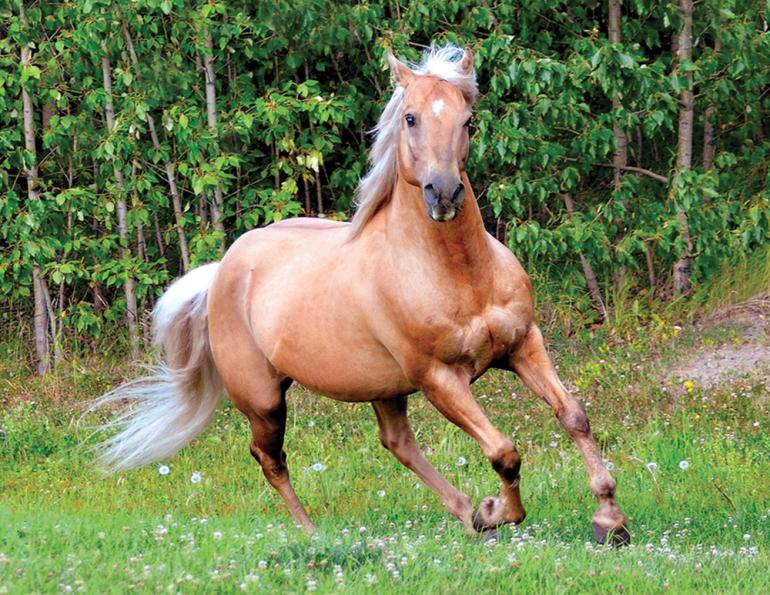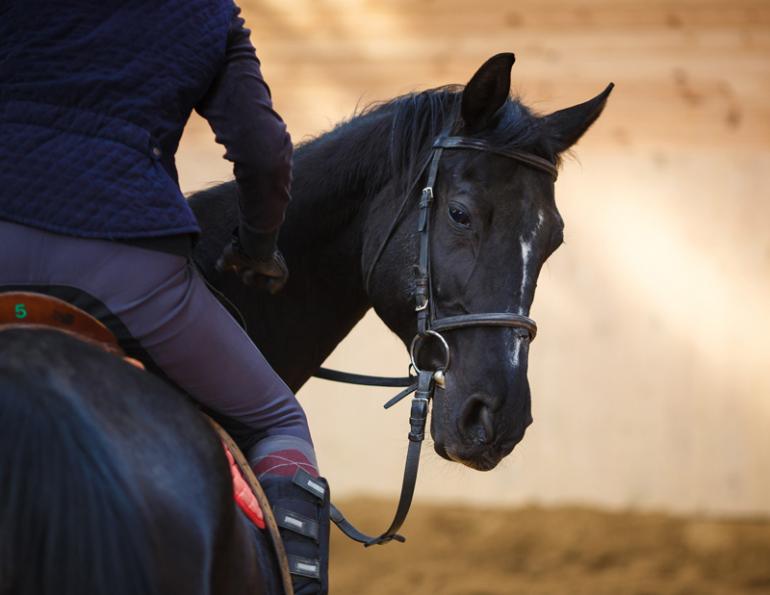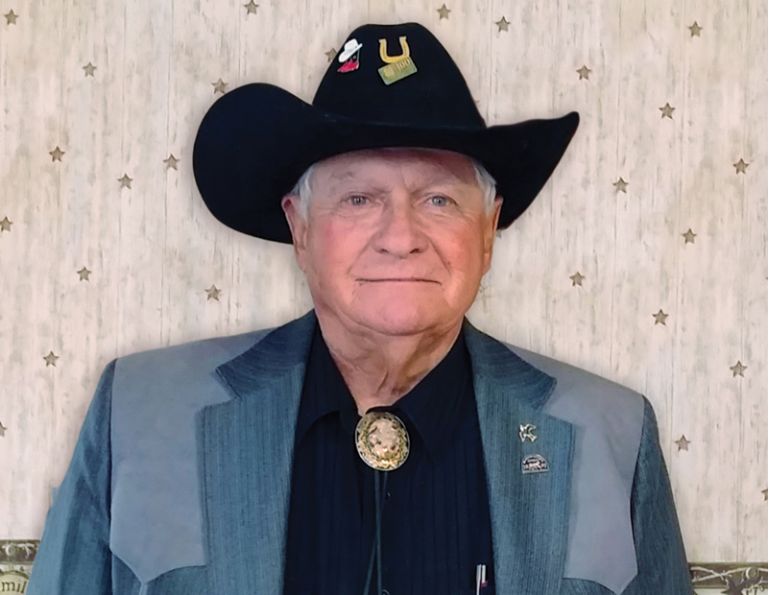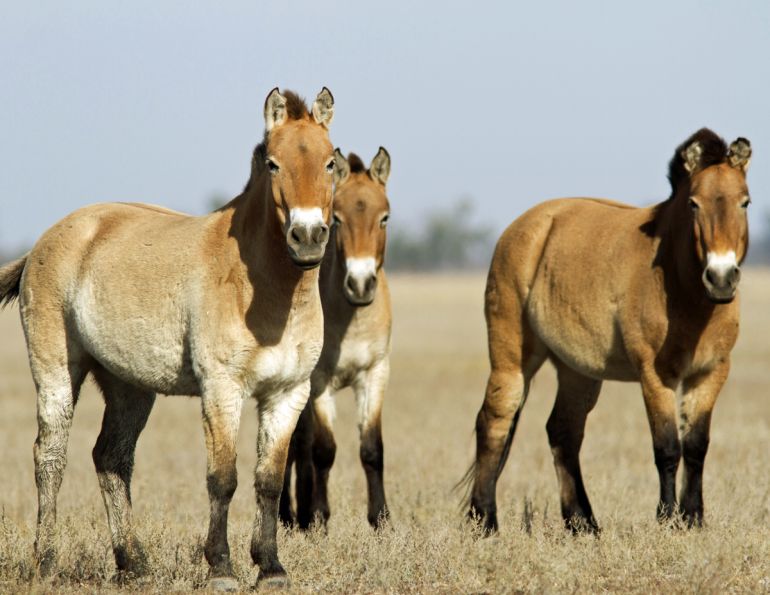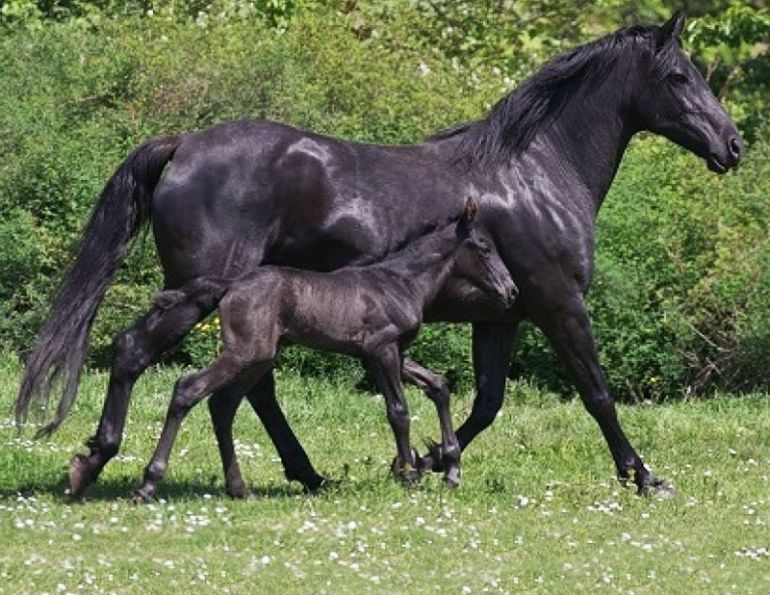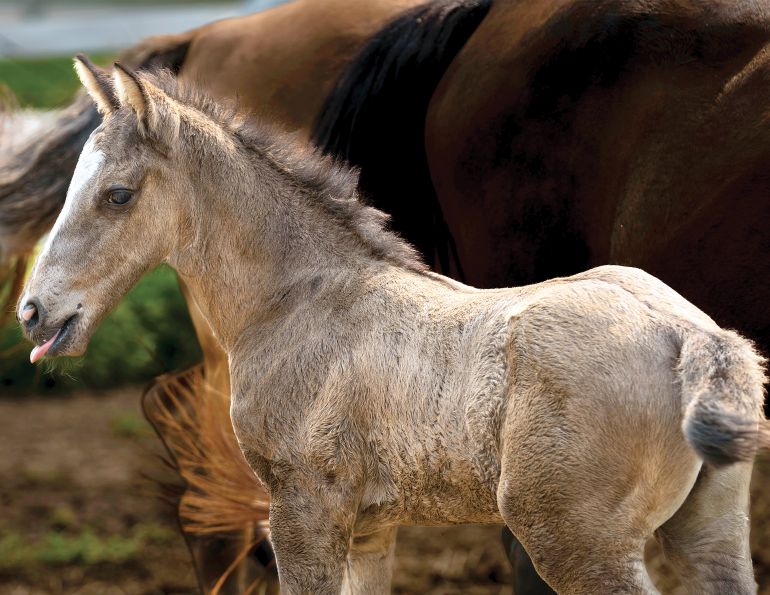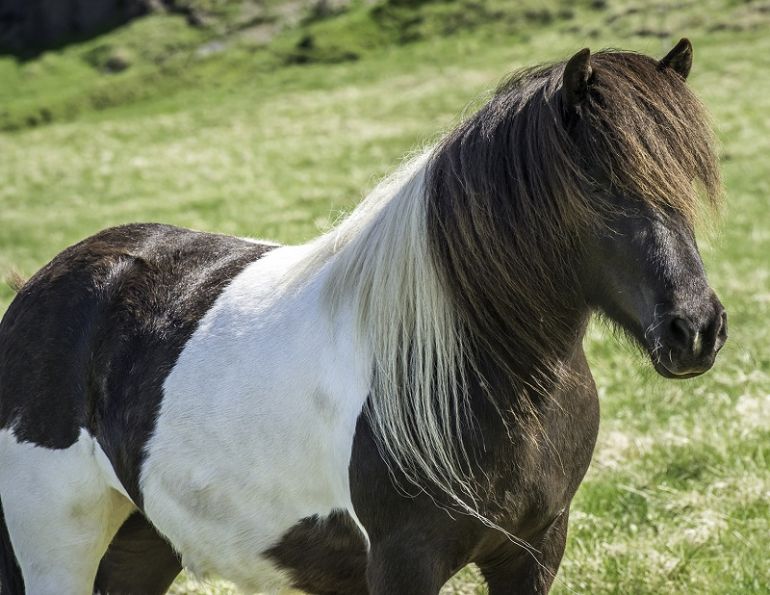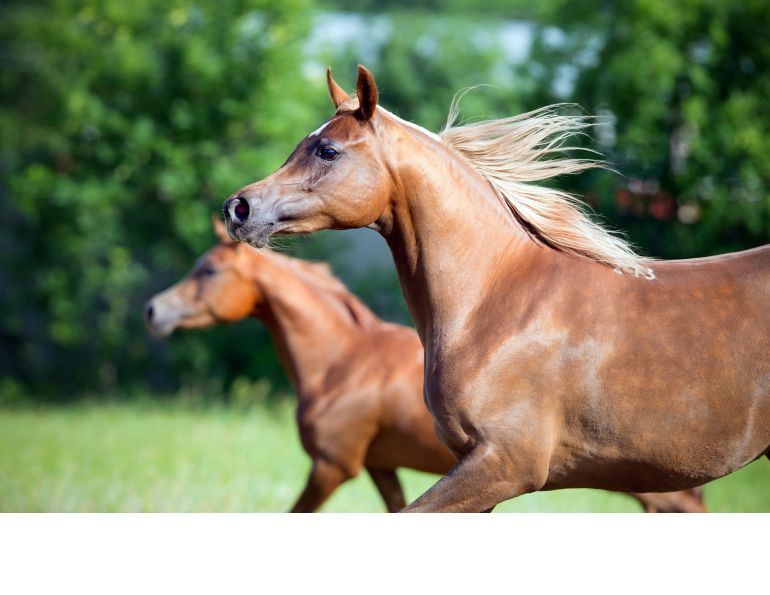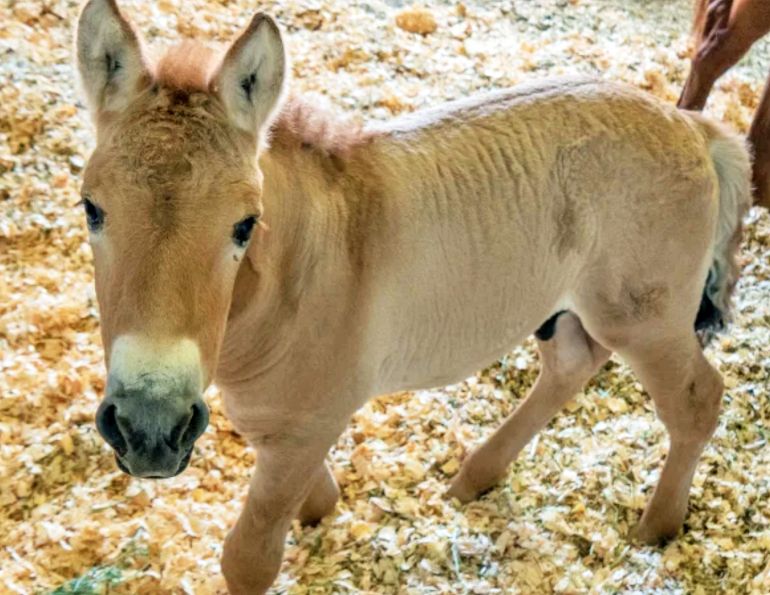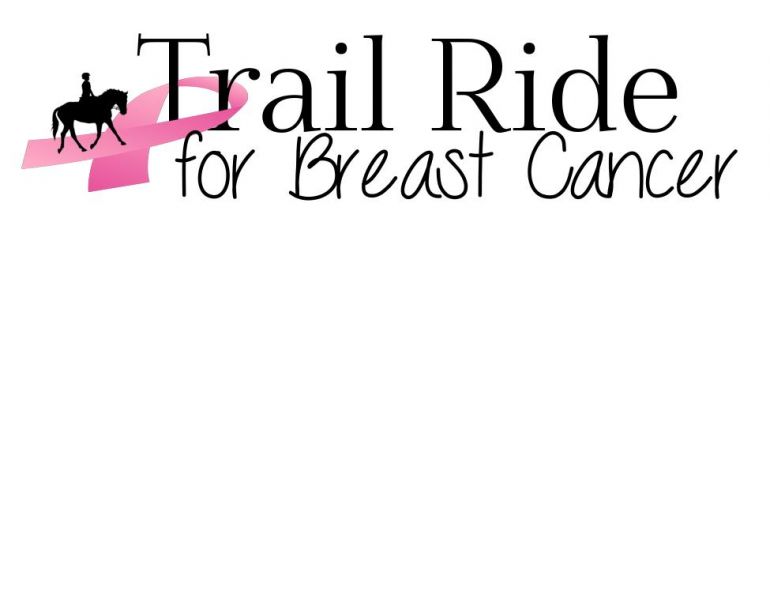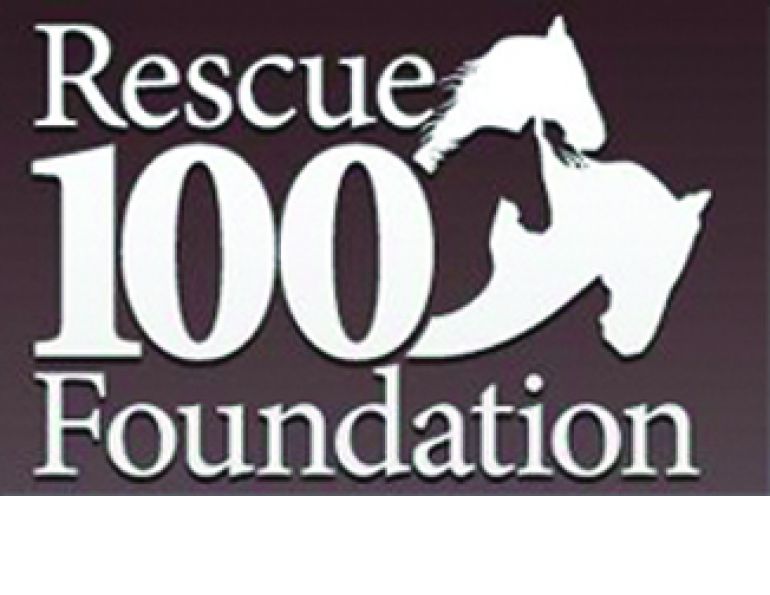The Horse That Chooses You
By Margaret Evans
“I had a home-bred [Morgan] gelding named Duncan,” says Tina Collins, office administrator, Canadian Morgan Horse Association. “Duncan was the type of horse that had to investigate everything. He not only had a humorous personality, but he was incredibly trustworthy and a superior trail horse.
“We attended a type of Poker Ride one summer. The majority of the horses were very large hunter types, rendering my 15.1 hand Morgan by far the smallest. As the day went on the card placements became more challenging. There was nothing Duncan said no to – through water, over wooden bridges, through thick forest. At one point we came upon a large group of riders looking down into a ravine. At the bottom of an extremely steep hill was the card. Without hesitation my little Morgan proceeded to the embankment. I gave him the reins and he carefully picked and slid his way to the bottom among the cheers from the riders above. Feeling quite pleased, I looked up and a feeling of dread came over me. Duncan turned his head to me as if to say Okay smarty-pants, now you’ve done it, how are we getting out of here? I grabbed some mane and, with one cluck, my little powerhouse got us safely to the top. For the remainder of the day, every difficult challenge was met with a chorus of The Morgan will do it!”
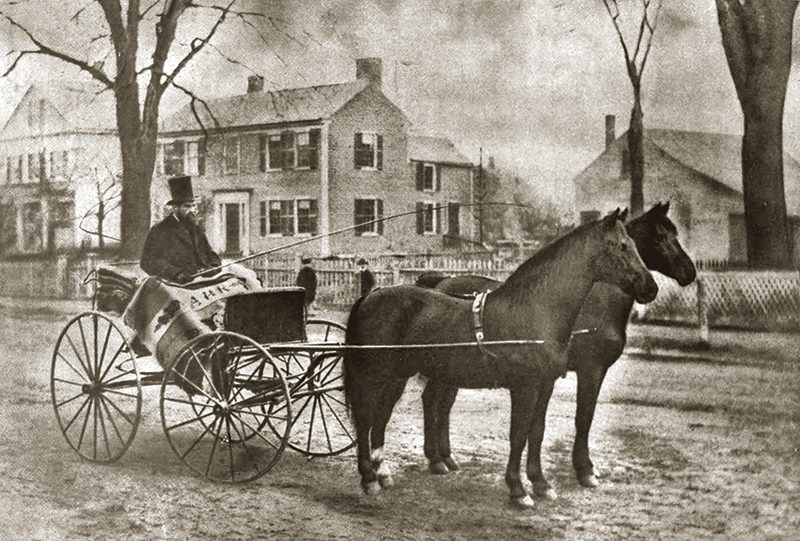
A pair of remarkable Morgan stallions from the 1860s: Morgan Tiger, son of Gifford Morgan, and Morgan Star, son of Black Hawk, owned, trained and driven by Amos H. Rockwell. They were never driven with the use of bridle or full harness, only a ten-foot whip. He exhibited this special team in every state in the Union, and in 1865 in New York City to the acclaim and wonderment of many onlookers “...demonstrated to all beholders the Morgan’s strongest attributes, which are great intelligence coupled with docility and fearless courage.” – Country Life, vol 17, 1910. Photo from CMHA Facebook page
Over the last 230 years, these plucky, versatile little horses have shown they can do it and have done whatever they have been asked, no matter the challenge. And it all began back in a time when settling a debt could be done not only with coins – but with colts!
In Randolph, Vermont, Justin Morgan was a singing teacher, composer, farmer, and horse breeder. Born in West Springfield, Massachusetts in 1747, he moved to Vermont in 1788. To settle a debt, Morgan received a striking bay colt foaled in 1789 in Springfield, Massachusetts. He called him Figure. Morgan had no idea at the time that Figure would be the founding sire of the breed that would bear his name and whose descendants would be the first American breed to survive more than two centuries to the present day.
According to the Pedigree Online All Breed Database, Figure (also known as “Justin Morgan” after his owner) was sired by True Briton, a Thoroughbred “of the best English blood.” True Briton was sired by Lloyds Traveller, a US-bred Thoroughbred whose lineage traces back four generations to the Byerley Turk, an Arabian that was one of three foundation stallions of the Thoroughbred breed, the other two being the Godolphin Arabian and the Darley Arabian.
Figure’s dam was an Anglo-Arabian. Her sire was Diamond, a Thoroughbred and a son of Church’s Wildair, by Wildair. Wildair was a grandson of the Godolphin Arabian. On her dam’s side, her heritage was Arabian going back three known generations to Arabian Ranger imported from Morocco.
Figure’s dam was described as being “…of middling size, with a heavy chest, of very light bay colour, a bushy mane and tail [with] the hair on the legs rather long, and a smooth handsome traveller…”
Figure’s Thoroughbred and Arabian heritage set him apart. Figure could out-walk, out-trot, and out-pull so many other horses that his abilities became legendary. He was offered at stud and became a prolific breeding stallion. What breeders loved about him was that he passed on his characteristics not only to his immediate offspring, but to subsequent generations.
Following Justin Morgan’s death in 1798, Figure was sold. At that time, he was also known as Justin Morgan, as it was the custom of the day to name a horse after its owner. He worked on farms, hauled freight, and served as a parade mount at militia trainings. He died in 1821 at age 32 from an untreated kick from another horse. His grave is marked by a stone in Tunbridge, Vermont, 10 kilometres from the town of Chelsea, home of his last known owner.

The grave marker of foundation sire, Figure, later named “Justin Morgan” after his best-known owner. He is said to have stood about 14 hands, and to have weighed about 950 pounds, with a compact, muscular body and stylish way-of-going. Photo: Joie Finley
Figure’s offspring carried on the tradition of working the fields, providing transportation, hauling freight, and pulling stagecoaches. According to the historical information on the American Morgan Horse Association (AMHA) website, in the 1840s a number of horse breeders in Vermont and neighbouring New Hampshire, recognizing the extraordinary and versatile qualities of the Justin Morgan horse, began concentrating breeding lines. They located second, third, and fourth generation descendants and established the foundation of the Morgan breed. By the mid-1850s, Morgan horses were selling for high prices. They were the horse of choice as roadsters and were widely distributed around the country.
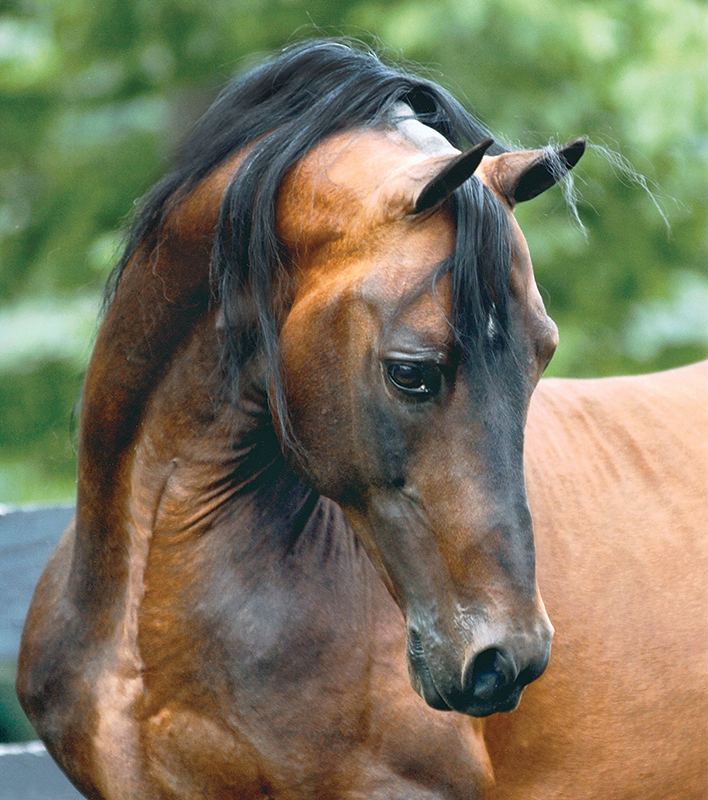
The Morgan stallion Ben’s Rhapsody, owned by Osage Hills Stable. Photo: Howard Schatzberg, courtesy of AMHA
Given their superior gait and athletic ability, they become celebrated for setting trotting records when harness racing was still in its infancy. Black Hawk, Figure’s grandson, achieved fame as a racehorse and Black Hawk’s son, Ethan Allen 50, was named the “Champion Trotter of the World,” trotting a mile in 2:25 minutes. Ethan Allen 50 was foaled in 1849. His dam was the grey mare Poll sired by Red Robin, a son of Figure. After his trotting success, Ethan Allen 50 stood at stud in Boston where he sired approximately 72 foals in his lifetime. He died in 1876 at age 28.
Among Figure’s noted offspring and descendants are Sherman, Woodbury, and Bulrush. But there were so many more. In a fascinating article series The Sons of Justin Morgan by Brenda Tippin, she outlines other sons including Brutus, foaled in 1794 and the earliest known son of Figure; Copperbottom, a noted pacer that spent time in Canada between 1810 and 1815; Tom Hal; Revenge; Weasel; Hawkins Horse; and Brandywine. Descendants of Brandywine are found today in the Standardbred breed. According to Tippin, the mare Poll, the dam of Ethan Allen 50, appears in the pedigrees of many Morgans today.
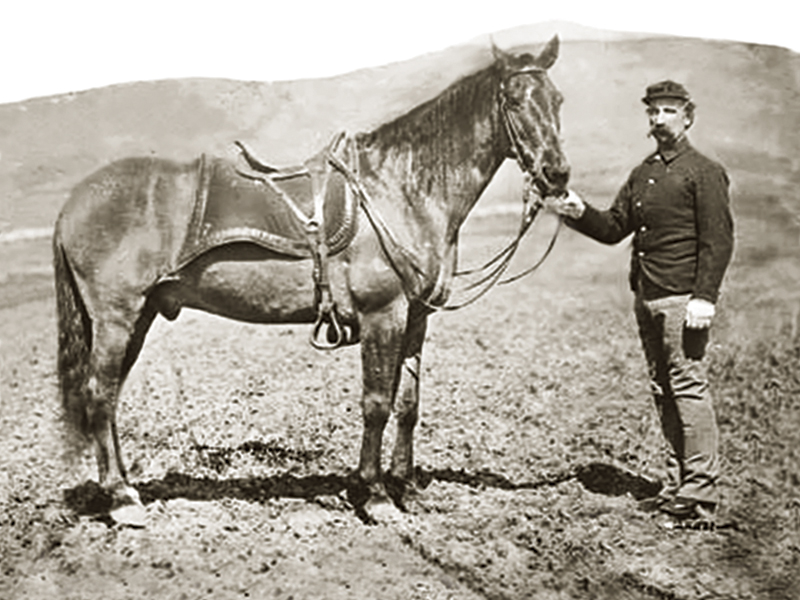
During the American Civil War (1861-1865), Morgan horses were desired cavalry mounts and artillery horses. The First Vermont Cavalry was mounted entirely on Morgans, and received shipments of Vermont horses during the war, according to the AMHA historical information. [Some] 200 of the original 1,200 Morgans used to mount the regiment survived the war and they inspired the following story:
“The other day, a very fine horse [was] being offered at the Inspection Ground; I bought him. He is a chestnut horse about 15.2 hands high, five years old, weighs between 1,000 and 1,100 and is pretty as a picture. He is of the Morgan breed, proud and high spirited, yet fearless. He will stand within four feet of a puffing locomotive and never thinks of being frightened. He is deep-chested and has very powerful and muscular limbs. Built for strength, speed, and endurance. He has a very fine head and ears, and a neck that might serve as a model in painting. In fact, he is a prince among horses, and I doubt not that I shall be envied my treasure when I rejoin my regiment. I ride him a little every day and enjoy it hugely. It seems good to be once more in the saddle. On the street his proud bearing attracts much attention and the rascal gets more admiring glances than his rider.” - Captain William C. Hazelton, 8th Illinois Cavalry, letter to his mother, June 3, 1864.
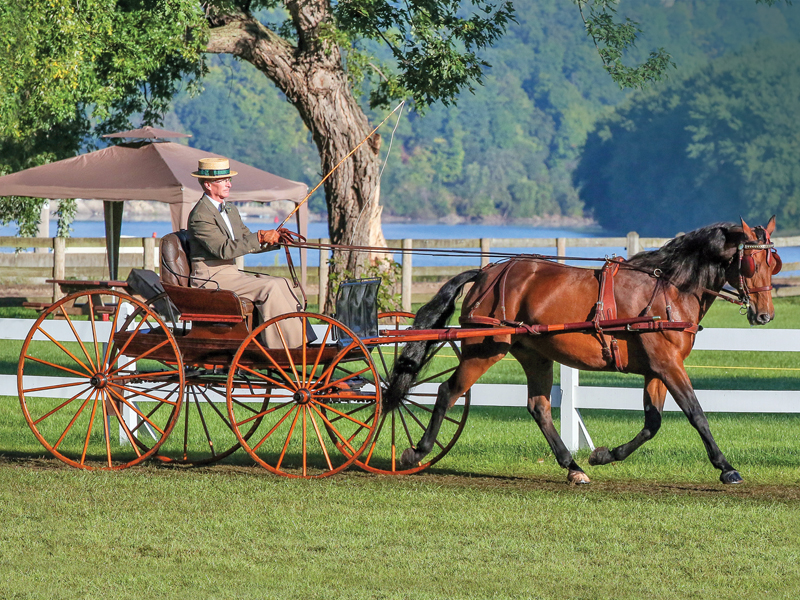
Morgans became renowned for their superior gait and athleticism, even setting world trotting records in the mid-1800s when harness racing was at its infancy. Today they remain highly regarded by driving enthusiasts and were the first American breed to represent the United States in World Pairs Driving competition. Shown is HD Harkness, owned by Mary Christine Foxworthy, driven by Martin Foxworthy. Photo: Bob Mischka, courtesy of AMHA
Morgan bloodlines would go on to contribute to the formation of other American breeds including the Standardbred, Quarter Horse, Tennessee Walking Horse, and the American Saddle Horse.
In 1907, the US Department of Agriculture established the US Morgan Horse Farm in Vermont to perpetuate the breed. It was later transferred to the University of Vermont. The first breed registry was established in 1909. The Morgan is the state animal of Vermont and the state horse of Massachusetts.
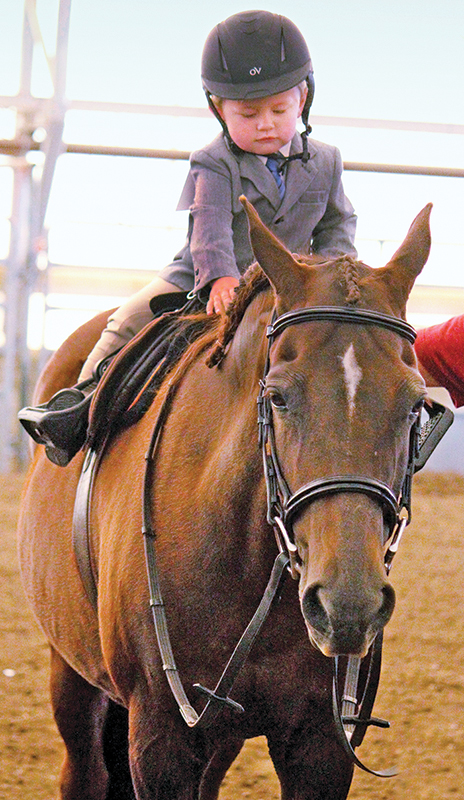
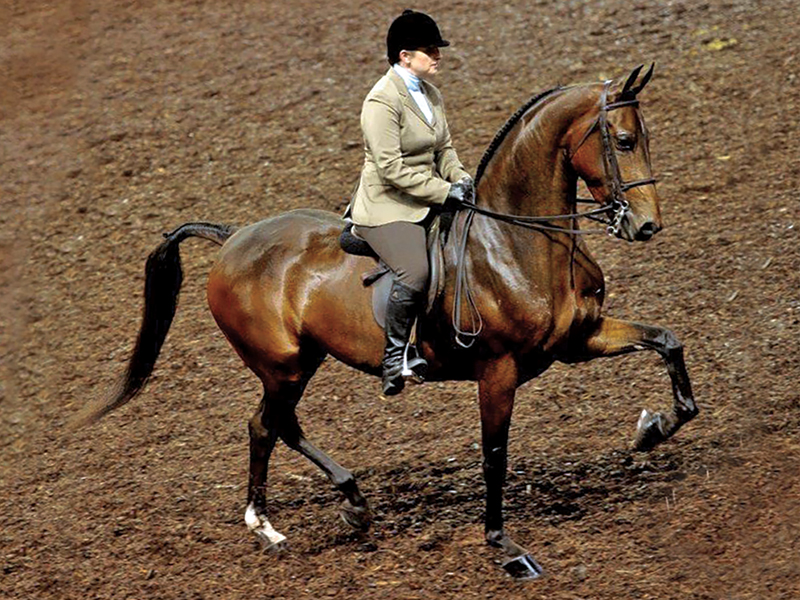
Morgans have earned an impeccable reputation for their sensible, people-friendly temperament and high degree of versatility with riders of all ages and experience. Photos courtesy of Bar B Ranch
The Morgan horse today is mid-sized at 14.1 to 15.2 hands and colours range from chestnut, black, bay, and brown to buckskin, palomino, cremello and, more recently, pinto. The breed has remained a very stylish mount with a conformation and way of going that lends itself to so many disciplines in driving and riding.
“They are highly intelligent, willing, expressive, tireless, versatile, loyal, tractable, and have longevity,” says Collins.
Apparently, they are also curious. She recalls a gelding she owned that was quite the escape artist:
“We were competing at a fair. The stalls had half doors which allowed ‘Timmy’ to hang his head out and play with the latches. He somehow managed to get out every night. On the last evening we were very careful to double latch his door. When we arrived the next morning, he was once again missing. He was found casually strolling down the midway checking everything out!”
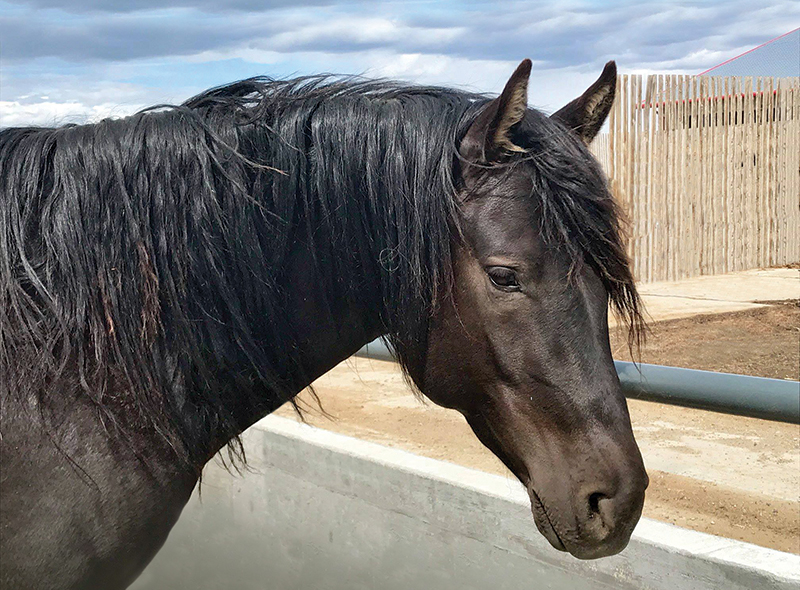
The 2015 foundation stallion Buttes Chief Spar, owned by Butte Morgan Horses. Photo courtesy of Butte Morgans
Among many attributes, their versatility really appeals to Monica Smyl who owns Country Rose Morgans in Wainwright, Alberta. “You can take them in the show ring one day, go on a trail ride the next day, chase cattle the next day,” she says.
Smyl loves their self-carriage with an upright head and animated movement; their mind (“they are very clever, learn quickly, love people, and adapt to any circumstance asked of them”); their good looks (“all their attributes come together and present a beautiful animal”); and their stamina (“you can’t wear them out!”).
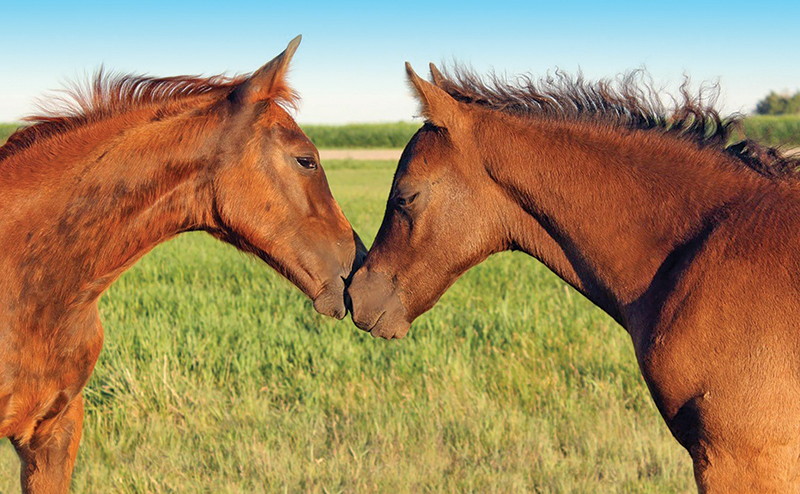
2013 foals at Butte Morgan Horses – Buttes Flamenco Dancer (chestnut filly) and Buttes Cielo de Noche (smoky black colt). Photo courtesy of Butte Morgans
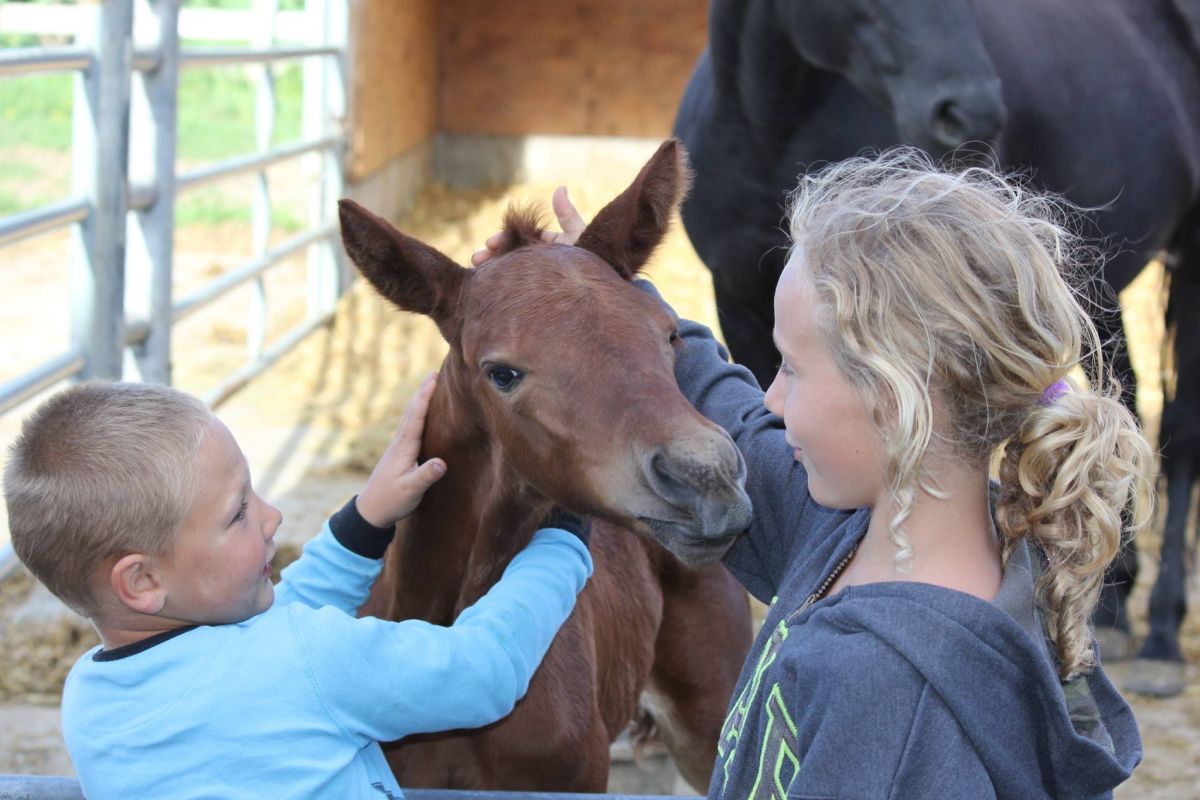
Buttes Summer Rain, a 2014 foundation Morgan filly, visits with the Campmans’ children. “I personally see the future of the Morgan Horse as the horse for our youth,” says Jess Campmans of Butte Morgan Horses. Photo courtesy of Butte Morgans
There is no doubt that the Morgan’s way of going is striking with their animated movement, arched neck, and attentive face, making riding and driving them such a pleasure. But at the heart of it is their desire to please humans.
“The Morgan breed is versatile and will continue to offer an appropriate mount for many English and Western events,” says Smyl. “They have been successful in many disciplines such as dressage, jumping, English and Western pleasure, cutting and endurance events. They are also used as mounts on western working ranches. Best of all, they are great for pleasure riding and driving! They are extremely athletic, capable of taking on any discipline.”
Sherri Wilson, owner of Lauralee Morgan Farm in Uxbridge, Ontario, president of the Ontario Morgan Horse Club and editor of the Canadian Morgan magazine, grew up with Morgans. Her focus is breeding and showing.
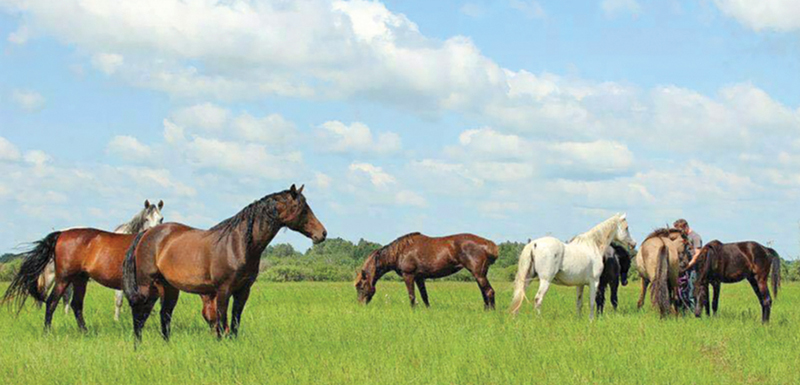
Judith Dexter of Mia-Mar Morgans says that more people have become interested in the breed now that colourful Morgans are available, with more white markings and even pinto colouring. Photo courtesy of Mia-Mar Morgans
“The versatility of the breed, the beauty, the love they have for people and their unique personalities are all qualities I can’t say enough about,” she says. “As a breed, there is a Morgan that will do anything you want to do with a horse. I ride mine saddleseat, hunt seat on the flat, and Western pleasure. I have driven them, ridden over jumps, gone swimming in Lake Ontario with them, done long distance riding with my show horses, hacked all over the countryside with them. I know people who perform ranch work with their Morgans, do reining with them, event them, dressage, Western dressage, cowboy dressage, trick horse training, they can do it all. Their personalities and abilities make them so unique and so much fun to be with. You love them and they love you right back.”
Jess Campmans of Butte Morgan Horses in Picture Butte, Alberta, agrees.
“The special qualities of the Morgan horse that first appealed to me, drew me to them, and have maintained my love for the breed, include their very personable nature, their highly inquisitive and willing disposition, their deep desire to please, and the inherent pride and charisma that you can see from across a field – that’s a Morgan horse! The features that set the Morgan apart, to me, are their overall robust body and strength of character that is etched into their very distinctly curved and refined head and neck, their uplifted, effortlessly smooth way of moving (I have never ridden a Morgan Horse that has been a rough ride), their endurance and stamina, and high degree of multi-discipline and multi-use versatility. Then there’s the fact that a beginner or young child can take a Morgan and that horse will not only take care of them, but the two will become an unbeatable and inseparable pair. This I have both experienced for myself, and witnessed countless times throughout my history with Morgans.”
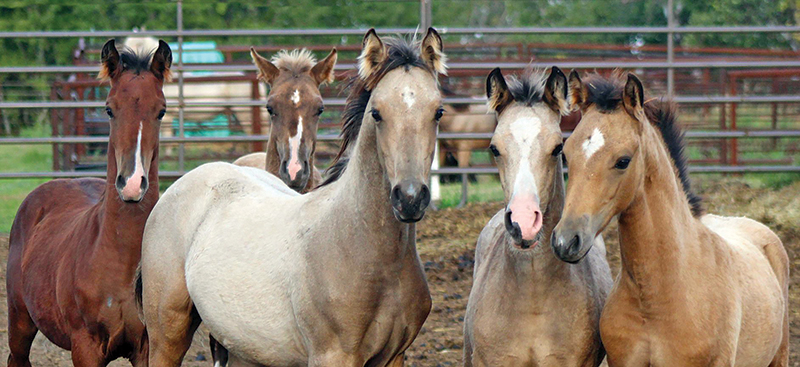
The primary market for Mia-Mar Morgans in Maidstone, Saskatchewan is new Morgan owners, and other breeders looking for stock. Photo courtesy of Mia-Mar Morgans
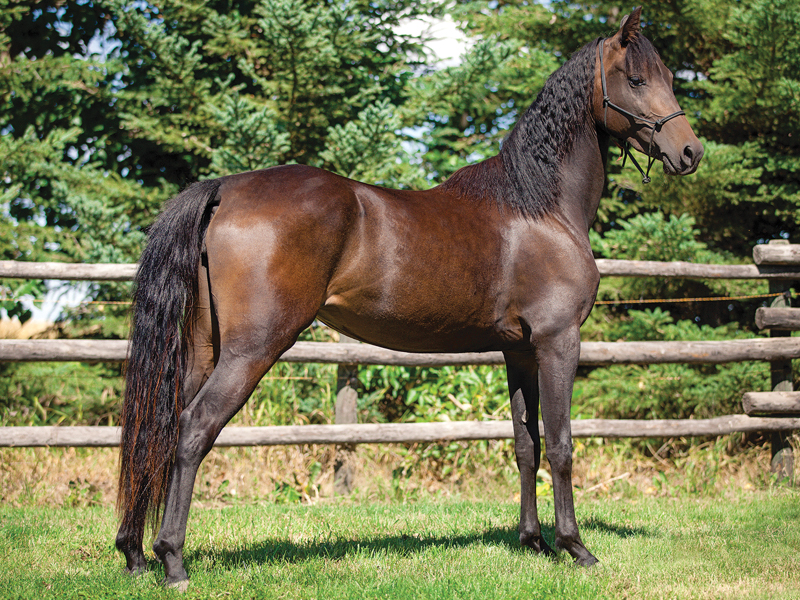
Monica Smyl of Country Rose Morgans loves the breed’s appearance, temperament, and versatility. “They are extremely athletic, capable of taking on any discipline,” she says. Photo: Meagan Kruse
Everyone interviewed for this article commented on how Morgan horses are so eager to please and so easy to train.
“Because the Morgan is so eager to make you happy, training comes easily,” says Judith Dexter with Mia-Mar Morgans in Maidstone, Saskatchewan. “They are smart and catch on quickly. Their natural desire to show off makes them a crowd pleaser in the ring. It takes a special horse to put up with going in a circle to the point of perfection, but a Morgan can do it if that’s what your goal is. But they are capable of so much more. I would be just as proud of the horse I bred taking a toddler safely in a noisy parade, or pulling a moose carcass out of the bush on a hunting trip, as I would be of the one wearing roses at the grand nationals. I like ‘using’ horses that are typey and correct.”
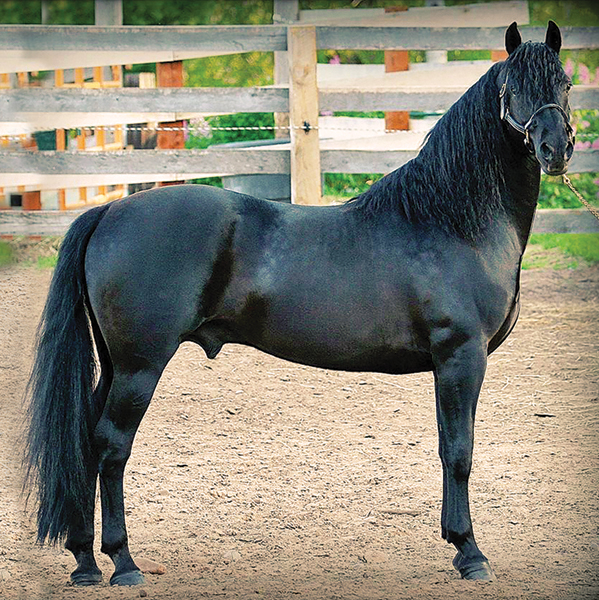
The 15.2 hand Morgan stallion JMF Basic Black stands at Country Rose Morgans in Wainwright, Alberta. Photo courtesy of Country Rose Morgans
Dexter is a breeder and her primary market is new Morgan owners and other breeders looking for stock.
“At one point in time my focus was the show ring and, under the coaching of long-time coach/mentor/friend Faye Stone of Birch Valley Morgans, I successfully rode Intrepid Rock Festival to the 2013 Canadian Morgan Horse Association Western pleasure champion and champion overall,” says Smyl. “I have since been bitten by the breeding bug and today my focus is breeding. I produce anywhere from three to six nicely-bred foals each year. These foals are capable of becoming show horses, driving horses, eventers, or beautiful family horses.”
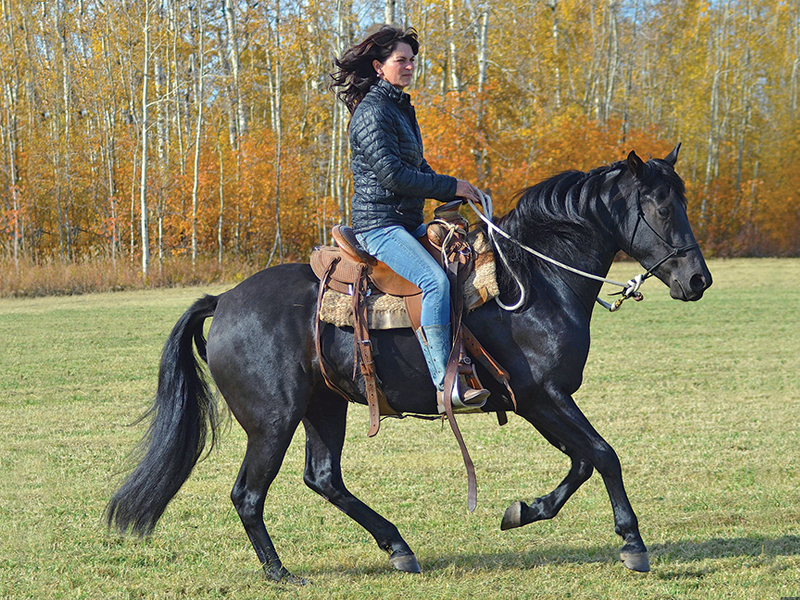
Raspberry Sunshine, an athletic 2013 mare bred by Raspberry Field Morgans, being started under saddle by Dixie Stewart. Photo: Carson Stewart Photography
At Raspberry Field Morgans in Rose Prairie, BC, Teresa Born has been breeding Morgans on a small scale for almost 20 years.
We don’t show our horses,” says Born. “We use our horses to go riding and packing in the mountains in northeastern BC. We haven’t done much of that lately as we have become busier with breeding instead. We find the Morgans are very versatile. They have good endurance, and they have strong feet. They are like the energizer bunny when you get them out on the trail… they like to go. They are curious and mischievous and very smart. They are very friendly in general and like to hang out with their people.”
According to the Canadian Livestock Records Corp., which maintains the records for the Canadian Morgan Horse Association, as at December 31, 2018, CMHA had a membership of 536 (down from 2017 at 590), with Alberta, Ontario, BC, and Saskatchewan having the most in 2018 in that order. However, the number of purebred Morgan horses registered in 2018 was up (18,112) compared to 2017 (17,947) and part-bred Morgans numbered 2,583 in 2018 compared to 2,578 in 2017. While there has been a bit of a decline in membership and registration in recent years, the breed is increasing in popularity abroad and as far away as Australia and New Zealand. In 2005, Morgan horses worldwide numbered about 175,000 and today, Morgans can be found in more than 20 foreign countries. The American Morgan Horse Association, drawing from a much larger population than Canada, has a membership that runs approximately 6,000 per year with about 17 percent being youth members (under 22 years of age). Some 43 percent of members are in the Eastern Region, 35 percent are from the Central Region, and 22 percent of membership are from the Western Region.
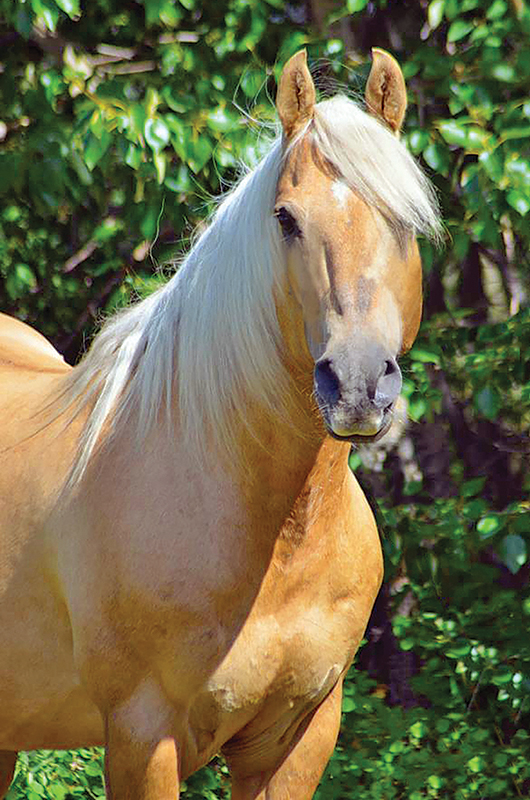
The 1997 Morgan stallion, Triple S Doldust Correll (Duster) of Raspberry Field Morgans. Photo: Dixie Stewart Photography
While the genetic lines of Morgans are strong, Smyl says that all breeds of horses are capable of having issues come up.
“Potential buyers need to do their homework and ensure that they are buying a sound horse capable of performing the tasks they want it to do (form to function),” she says. “There also has to be good chemistry between you and your horse. Morgans tend to ‘pick’ their people, not the other way around.”
To help Morgan owners as well as riders new to owning a Morgan, the American Morgan Horse Association offers the Mentor Network, a program for riders to communicate with each other, brainstorm ideas, increase their knowledge, and improve their horsemanship skills. The goal, of course, is to increase the number of Morgan horse enthusiasts and to foster a network of owners connecting with each other and seeking advice from mentors.
In addition, the Association offers a program called the Ranch Horse Network, which is designed to recognize farms or ranches using Morgan horses for any of their working activities. The network allows promotion of the Morgan horse while at the same time showcasing their abilities in a working capacity.
At the other end of the scale is the My Morgan and Me Program, which recognizes the use and enjoyment of the recreational Morgan horse.
But for Campmans it is not just about the riding experience, it is the entire, holistic value of Morgan horses.
“My current focus is twofold - as a breeder of horses that are chosen for and oriented toward supporting, enriching, and enlivening the lives of humans, and through my Equine Guided Healing program known as Guided by Equus, with these same horses finding their way into the hands and lives of people who want a horse that will be their forever loyal partner and carry them wherever they desire to travel.”
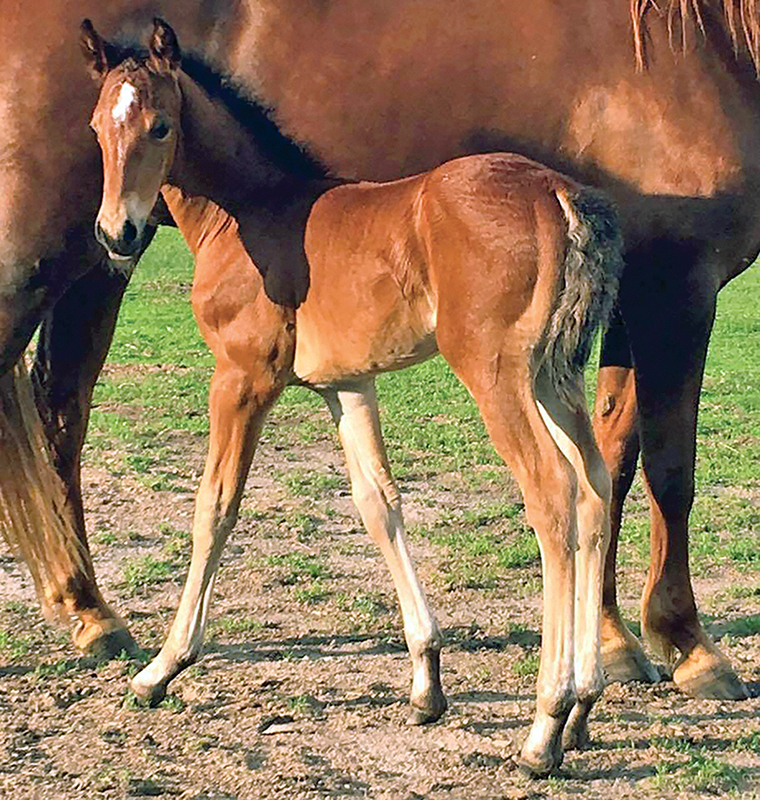
Lauralee Morgan Farm’s colt LLF Murphy’s Irish. Photo by Sherri Wilson
At a time of flux when the horse industry is struggling to hold its own to some degree, Campmans would agree that she is not totally sure she has seen an increase in interest in the breed.
“Whenever I have been at promotional events, there are always people who claim that their grandpa owned a Morgan and it was the best horse he ever had!” she says. “And I have sold Morgans to many people who had no idea what a Morgan was, and they say that out of all of the horses they have owned the Morgans were the best. I feel like this breed is kind of a best-kept secret - the people who own these horses love them and many of them never change hands or are busy shaping the lives of their people and don’t find their way into a larger population. With respect to a trend towards people with limited or no experience getting into horses and more recreational riding, versus horses used for a livelihood, these horses really are the best-kept secret, as they deliver to whatever level their rider is and becomes.”
“I personally see the future of the Morgan Horse as the horse for our youth,” says Campmans. “They are such dependable, stable-minded, compatible, competitive, sensible, tractable, and willing animals as a whole that they fit into the lifestyle as a backyard best friend as easily as they excel in a competition, and with limited resources invested into making them into such a horse. They are that genuine in their willingness to do whatever their human desires.
“Future plans with my own Morgan horses are to continue breeding, raising, and living this life with these horses. They have been part of my life since I was 11 years old, and now they are helping me raise my kids into competent students of the horse, along with sharing their friendly, docile, huge heart and solid dependable disposition with every person who interacts with them. They are a sincere joy to own, raise, learn from, and have as the backbone of my life!”
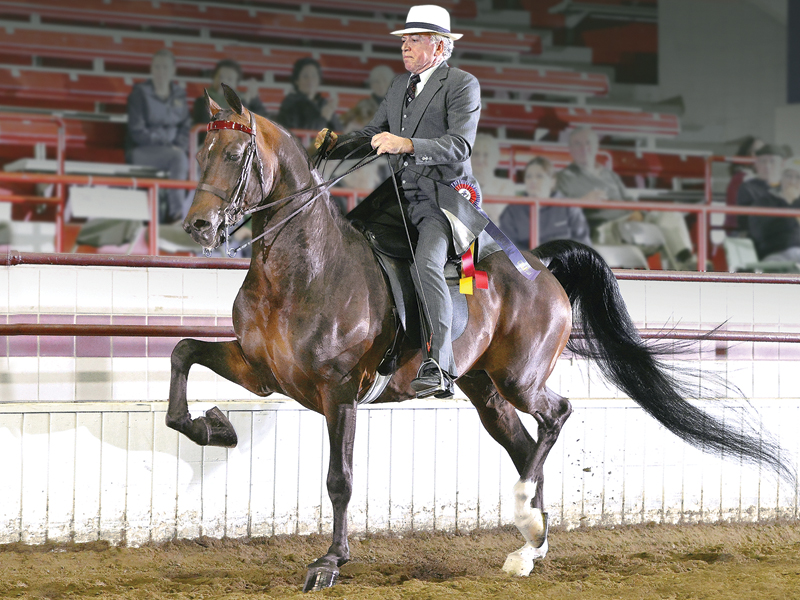
Harlan’s Azurean, Morgan Stallion, winning the Park Saddle class at New York Morgan Regional show in Syracuse, NY, ridden by Lynn Peeples. Photo by Terry Young, courtesy of Sherri Wilson
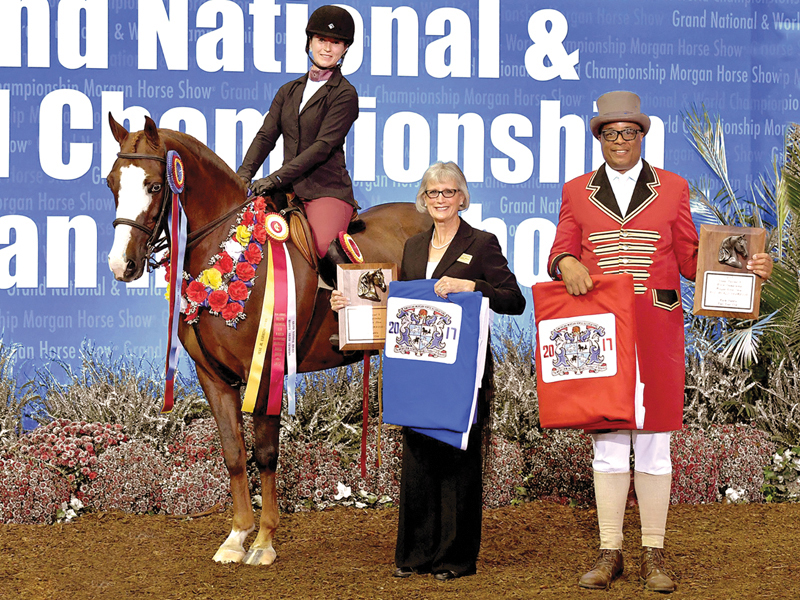
The 2017 Equestrian Canada Morgan Horse of the Year, Canabar Masquerade, owned by Shari Groot, Alberta. This combination accumulated more points than any other Morgan Horse in Canada in a single division (Trail). Canabar Masquerade received World Championship and Reserve World Championship titles in English and Western Trail at the 2017 Morgan Grand Nationals & World Championship Show in Oklahoma. Photo courtesy of CMHA

National Champion in Combined Driving, BMF Spartacus, driven by Aren-Dina Popidiuk of BC. Photo courtesy of CMHA
From Dexter’s perspective, she believes that people are becoming more aware of what a Morgan horse is and, surprisingly, some of that is being driven by colour.
“Morgan people have traditionally always had basic colours of black, bay, and chestnut,” she says. “They have even gone so far as to shun Morgans that are colourful. Not terribly long ago, Morgan horses had a rule against excessive white markings. Then, with the implementation of DNA to prove parentage, they can no longer refuse registration to Morgans with high white. In the last 10 to 20 years, more people have sought out these colourful Morgans and they have become more popular because of it. With more Morgans available that have more interesting colours, more people have become interested in the breed. I have Morgan horses that are full-blown pinto with white over their back. Now pinto lovers can consider purchasing a Morgan when they are looking for their dream horse. This definitely opens up a bigger market for the Morgan horse.”
Dexter’s concern going forward is that the Morgan community is not doing its part to preserve the versatility of the breed and showcase it more.
“Our horse shows used to have tack change classes,” she says. “That’s what versatility is, it’s one horse that can do many disciplines. We still have those horses, but they just are not rewarded anymore. Now horses at our horse shows are highly specialized and versatility is not exhibited at all.”
She sees great value in the fact that the breed spans across all disciplines and Morgans can be found at the top levels of competition or performance. “It doesn’t matter what you like to do with your horse, you can have a Morgan and do it well.”
Dexter says Morgans shine in show jumping and dressage – she calls them “the pioneers of Western dressage” – as well as cattle-related sports such as roping and penning. They excel in extreme trail and endurance, in parades, therapeutic riding, and in all driving disciplines from combined driving to heavy pulling.
“One of the most unique things is, even if you only want to ride your horse once a month during the warm months, you can take your Morgan safely because they don’t forget their training while they are getting time off. No refreshers needed!”
Wilson couldn’t agree more.
“They remember EVERYTHING,” she says. “You don’t have to retrain them every time they have time off. They remember what you trained them to do and pick right up and continue on. They are so rewarding, the babies who call to you when they see or hear you coming, the youngsters learning to stand and start working, the young horse performing its first canter under saddle, the well trained horse who gives you everything every time because you asked them to.”
In Nova Scotia, the Wade family honours the Morgan in their Morgan Horse Museum, the dream of George Wade who passed away in 1997 after devoting his life to the breed. The Museum is housed at Hobby Horse Farm in Coldbrook and the family’s wish is that the Morgan will always be a valued breed among Canadian horse owners.
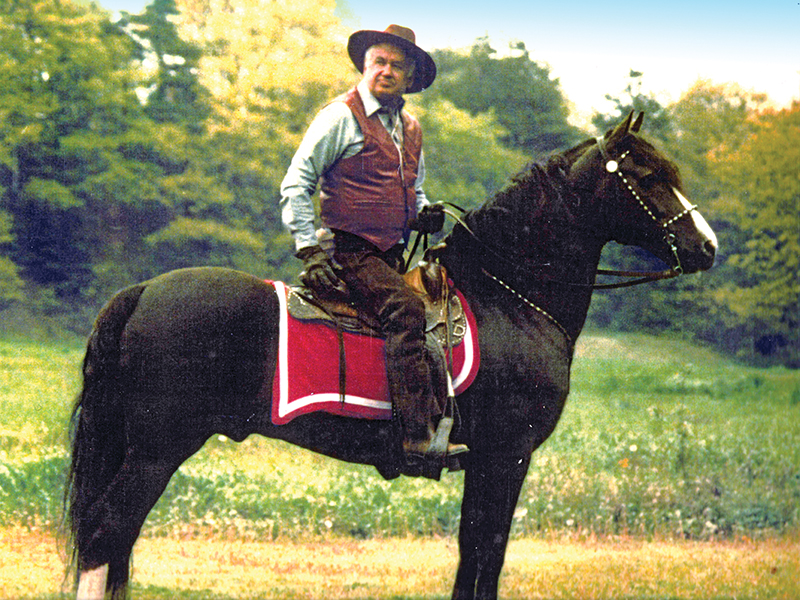
The Morgan Horse Museum in Coldbrook, Nova Scotia was the dream of patriarch George Wade, who devoted his life to the Morgan horse breed. It is funded and hosted by the Wade Family who carry on his legacy. George Wade is pictured during the Apple Blossom Festival Parade in Kentville, NS, circa 1986. Photo: Leslie Wade
Justin Morgan would be so proud of the little horse he took in trade for a debt, that proved his value immeasurably by becoming the founding sire of the Morgan breed and carrying his name so proudly into the future.
Main photo: The stallion Triple S Doldust Correll stands at Raspberry Field Morgans in Rose Prairie, BC. Photo: Dixie Stewart Photography



